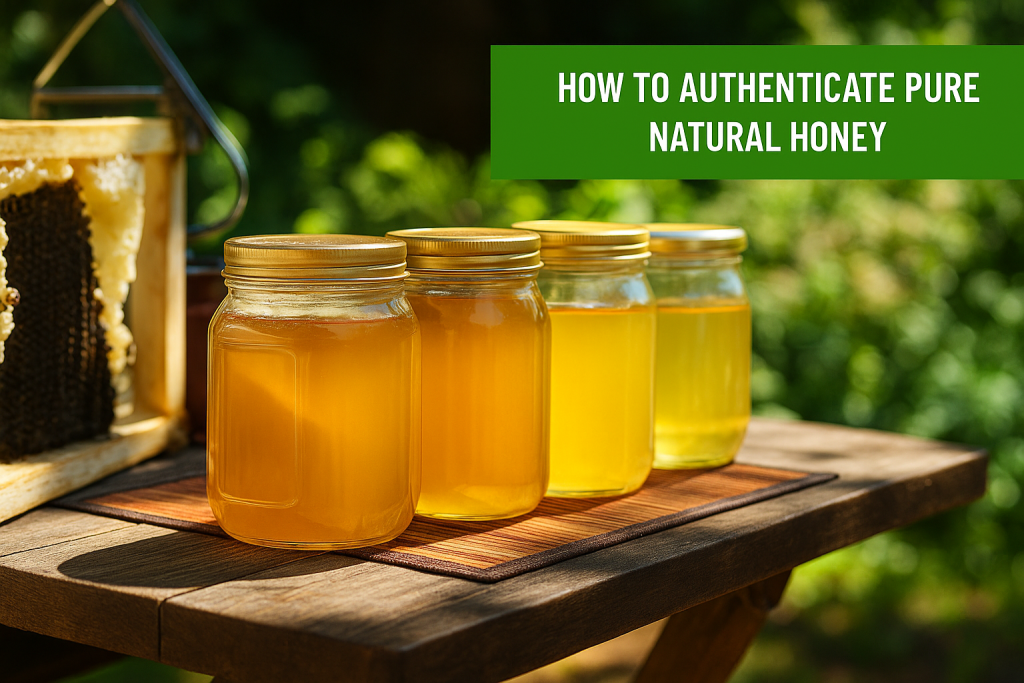How to Authenticate Pure Natural Honey in India
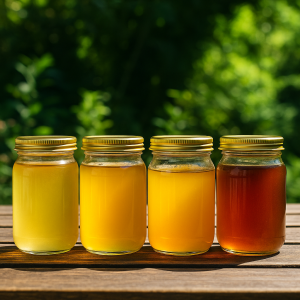
Honey is one of nature’s most powerful gifts — rich in nutrients, antioxidants, and medicinal properties. But not all honey is pure. In India, many big brands manipulate honey to increase production and profits, often at the cost of your health.
So, how can you ensure the honey you’re consuming is truly natural and unadulterated?
Let’s break it down.
The Hidden Adulteration in Branded Honey
Most commercial honey brands use modern adulterants like:
-
High Fructose Corn Syrup (HFCS)
-
Rice Syrup
-
Invert Sugar
These additives are chemically similar to natural honey and often pass basic laboratory tests. This makes it extremely hard for the average consumer — or even a lab — to detect adulteration.
Age-old purity tests like the “water test” or “flame test” are unreliable. They cannot detect these modern syrups. So what’s the solution?
No Simple Test – But There’s a Smarter Way
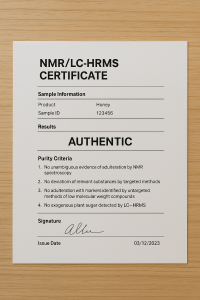
There is no at-home test or basic lab test in India that can guarantee honey purity. The only dependable ways are:
-
Advanced testing like NMR (Nuclear Magnetic Resonance) or LC-HRMS (not widely available in India).
-
Educated buying, where you assess the honey by its source, variety, and extraction process.
Let’s explore the smarter way — how to identify authentic, raw, and unprocessed honey using natural cues.
1. Look for Botanical and Geographical Source
India is home to diverse flora — and genuine honey reflects this diversity.
Pure honey varies in taste, aroma, color, and texture based on:
-
The flower source (botanical origin)
-
The region it comes from (geographical origin)
This is called monofloral honey – when bees collect nectar predominantly from one flower type.
Examples of Real Monofloral Honey in India:
-
Jamun Honey (May–June) – Dark, slightly bitter, anti-diabetic
-
Litchi Honey (Bihar, Punjab, Uttarakhand) – Light and fruity
-
Multiflora Forest Honey – From Himalayan and tribal forest belts
⚠️ Fake brands often sell the same type of honey all year round — same taste, same texture, same color. That’s unnatural.
2. Real Brands Offer Variety
A trustworthy honey brand will:
-
Clearly mention the floral source on the label
-
Specify the region or state of origin
-
Offer seasonal varieties (e.g., Jamun in summer, Litchi in spring)
This level of transparency and variety is impossible with adulterated or synthetic honey.
3. Seasonal Flowering = Seasonal Honey
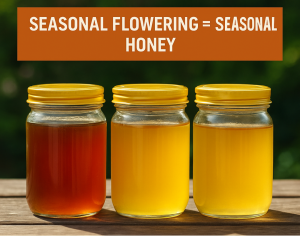
In India, flowering seasons vary by region. So does honey harvesting.
-
Jamun honey – May to June
-
Mustard honey – Winter season
-
Sidr honey – Late autumn
Any brand offering “one-type-fits-all” honey year-round is not offering raw honey. Always ask: Is this honey seasonal? What’s the floral source?
4. Understand the Extraction Process
Real honey is fully ripened and capped with wax by bees before harvest. This natural sealing ensures low moisture and long shelf life — no need for heating or processing.
But commercial brands:
-
Buy unripe honey from farmers to meet high demand
-
Heat it to reduce moisture and prevent crystallization
-
Kill the nutrients in the process
Remember: Pure raw honey can crystallize — especially in colder weather. That’s a sign of purity, not adulteration.
5. Avoid Brands That Over-Process Honey
If the honey never crystallizes, has no variation, and feels syrupy — it’s likely:
-
Overheated
-
Blended
-
Adulterated
Raw honey is naturally thick, sometimes cloudy, and varies with the season and source. That’s how nature works.
6. Look for Labels That Indicate Purity
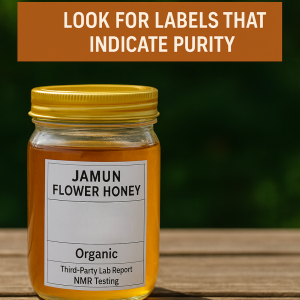
When choosing honey:
-
Check for botanical origin (e.g., “Jamun Flower Honey”)
-
Look for GI tags (Geographical Indication) if available
-
Avoid vague claims like “Organic Honey” without source or season mentioned
Also, prefer brands that back their purity with third-party lab reports, preferably with international tests like NMR.
Conclusion: Don’t Fall for the One-Honey-Fits-All Trap
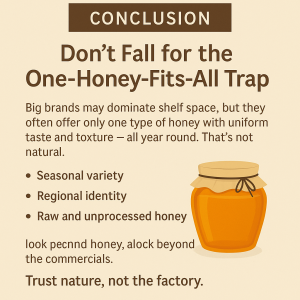
Big brands may dominate shelf space, but they often offer only one type of honey with uniform taste and texture — all year round. That’s not natural.
If you’re serious about honey, look beyond the commercials. Choose a local, transparent brand that offers:
-
Seasonal variety
-
Regional identity
-
Raw and unprocessed honey
Trust nature, not the factory.
Where to Find Authentic Honey?
Bharat Honey is one such brand — sourcing raw, monofloral honey directly from beekeepers across India. We label each variety by flower and region, and back purity with ₹10,000 challenge + advanced testing.
📍 Visit us: Bharat Honey Location
🌐 Website: bharathoney.com

